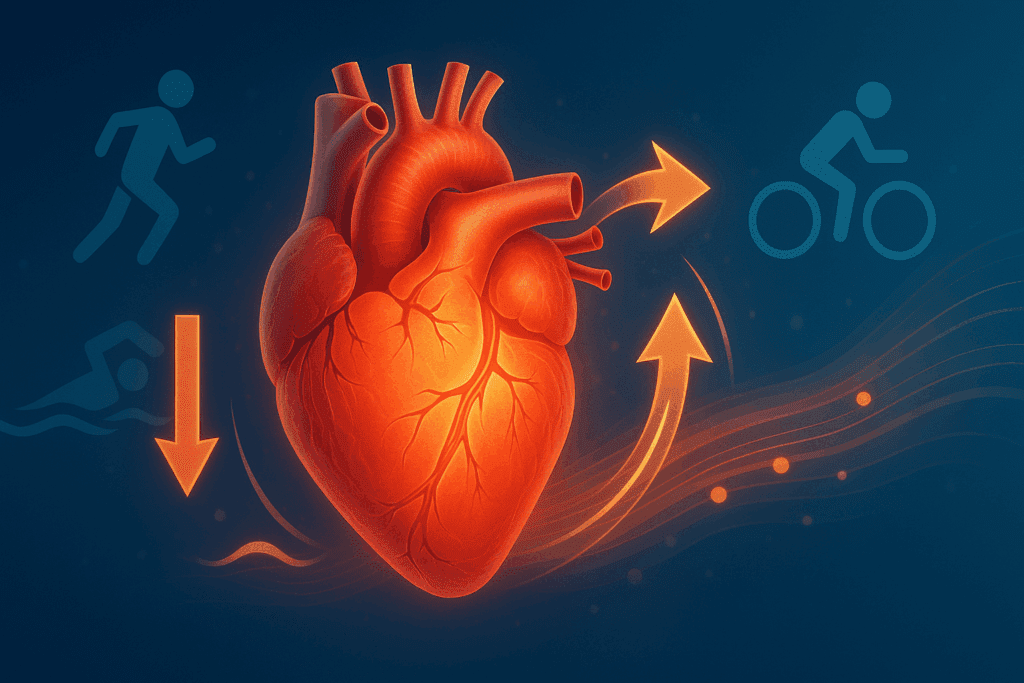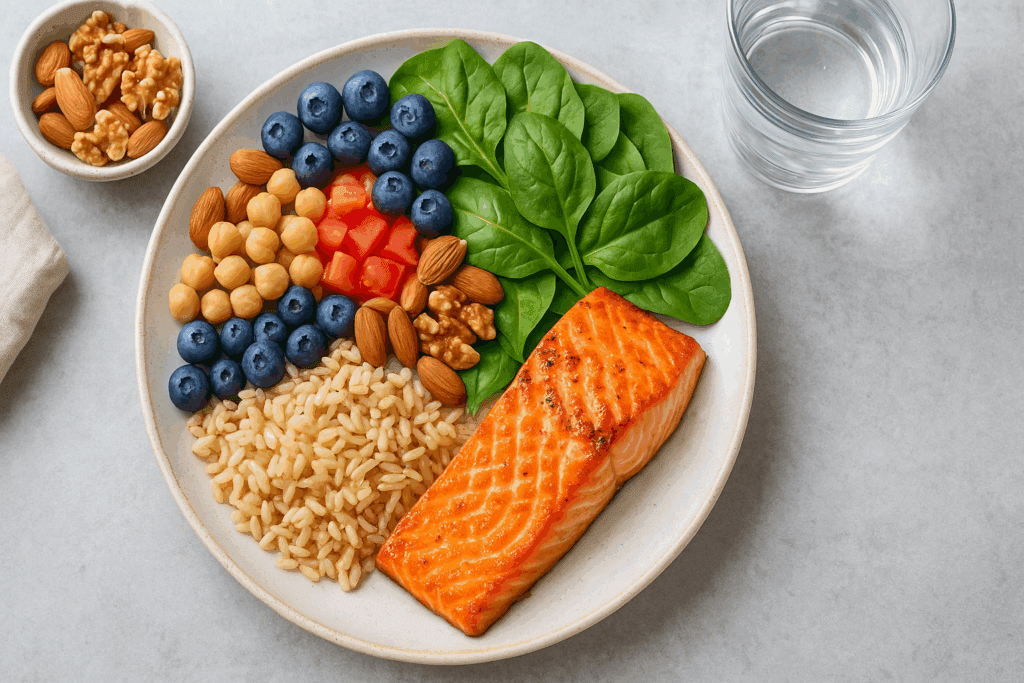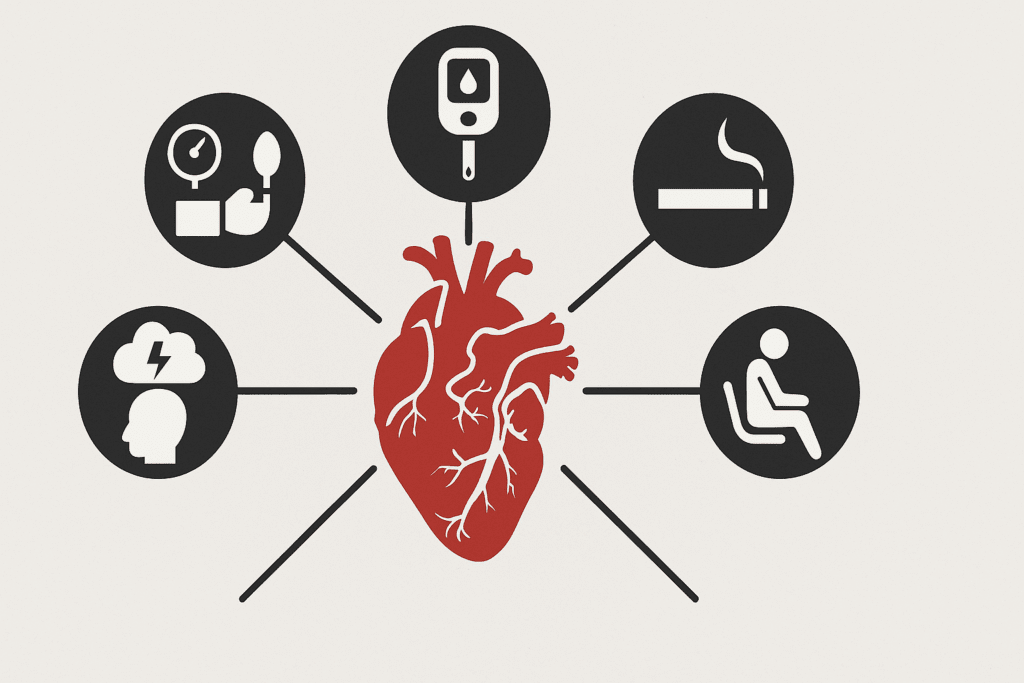Introduction
Building endurance and cardiovascular resilience is a powerful goal for anyone interested in long-term health and physical performance. For individuals with an elevated risk of coronary heart disease, however, pursuing greater stamina requires a careful, informed approach. Understanding the most common coronary artery disease risk factors can help you make smarter choices that support both endurance and heart health. This balance is not only achievable—it is essential for safe, sustainable results.
Endurance training can yield profound benefits. Regular aerobic exercise enhances heart function, oxygen delivery, and muscular efficiency, all while promoting better metabolic health and emotional well-being. But without careful monitoring of CHD risk factors, pushing physical limits can sometimes trigger dangerous outcomes. Whether you are managing pre-existing health concerns or simply looking to prevent future issues, this article will guide you through expert-backed strategies to improve endurance safely while reducing your risk of heart disease.
You may also like: Smart Nutrition Choices for a Healthier Lifestyle: What to Know About Whole Grain Rice and Whole Wheat Rice

Understanding the Link Between Endurance and Heart Health
The heart is a muscle, and like any muscle, it strengthens with consistent, appropriate use. Endurance training—activities like jogging, swimming, or cycling—challenges the cardiovascular system, encouraging it to adapt and grow more efficient over time. Increased cardiac output, lower resting heart rate, and improved circulation are just a few benefits of aerobic conditioning. But for those with underlying coronary risk factors, exertion can reveal cardiovascular limitations that must not be ignored.
Common coronary artery disease risk factors include high blood pressure, high LDL cholesterol, type 2 diabetes, obesity, smoking, and physical inactivity. These risk factors of ischemic heart disease can cause plaque to build up in the coronary arteries, restricting blood flow to the heart muscle. When demand for oxygen increases during exercise, this restricted flow may not keep up—leading to angina, shortness of breath, or more serious events.
Endurance exercise helps mitigate many of these issues. Aerobic activity can lower blood pressure, improve lipid profiles, and boost insulin sensitivity. In fact, with proper medical guidance, endurance training is one of the most effective tools for reducing CHD risk factors. But it’s critical to train intelligently, based on your personal health status and family history.

Monitoring and Addressing Primary Risk Factors for Coronary Heart Disease
The first step toward managing heart disease while building stamina is understanding where you stand. Coronary heart disease patient education begins with awareness of your individual risk profile. This means knowing your numbers: blood pressure, cholesterol, fasting glucose, and body mass index. If these metrics fall outside the healthy range, you may be at increased risk for CHD—and that’s your signal to proceed with caution.
Smoking is one of the most well-known and dangerous risk factors for coronary heart disease. It damages arterial linings, reduces oxygen supply, and increases clotting risk. Quitting smoking is one of the most powerful steps you can take to improve endurance and heart health simultaneously. Diet plays a pivotal role too—sodium, saturated fats, and added sugars can inflame blood vessels and elevate cholesterol, while a balanced diet rich in fiber, omega-3s, and plant-based nutrients can reverse much of that damage.
Physical activity is equally important, but the type, duration, and intensity should match your current condition. If you’re recovering from a heart issue or managing multiple primary risk factors for coronary heart disease, start with low-impact, moderate-intensity exercises like brisk walking or stationary biking. Gradual progression—not pushing to extremes—ensures safer and more sustainable gains in endurance.
How Long Does It Take for Heart Disease to Develop?
One of the most pressing questions people ask is how long it takes for heart disease to set in. Unfortunately, the answer isn’t simple. The risk of coronary heart disease is increased by years of exposure to poor habits and unaddressed health conditions. In many cases, the early stages of heart disease develop silently, without symptoms, beginning as early as adolescence and progressing over decades.
Atherosclerosis—the buildup of fatty deposits in arteries—often begins quietly, exacerbated by high cholesterol, poor diet, lack of exercise, and smoking. Some people may go years without knowing they have significant arterial narrowing until it is revealed during a stress test or, worse, after a cardiac event. That’s why proactively addressing coronary artery disease risk factors early is so essential.
If you are living with a high CHD risk due to genetic or lifestyle influences, you can slow—or even partially reverse—the progression of disease by changing your habits. Regular cardiovascular screenings and lifestyle interventions are the best tools to detect problems early and reduce the long-term burden of heart disease.

Training Smart: How to Build Endurance Without Raising CHD Risk
Increasing stamina without increasing risk for CHD is a balancing act—but one that is completely possible with proper planning. Start with consistency over intensity. Walking, swimming, or cycling at a moderate pace can build aerobic capacity without overstressing the cardiovascular system. The key is to gradually increase your duration and frequency, rather than jump into high-intensity routines too quickly.
High-intensity interval training (HIIT) can be beneficial for those with more advanced fitness levels, but only after a solid foundation has been established. For beginners or those with known coronary risk factors, supervised exercise is a safer route. Overexertion, especially in untrained individuals, can trigger arrhythmias, ischemia, or heart attacks.
Recovery and rest are also essential. Overtraining leads to hormonal imbalances, systemic inflammation, and cardiovascular strain. Incorporate rest days, sleep well, and stay hydrated. Smart endurance building isn’t about pushing limits constantly—it’s about respecting your body’s cues and responding with wisdom.

The Role of Stress and Sleep in Heart and Performance Health
Stress and sleep are often underestimated when it comes to improving stamina and reducing heart disease risk. Chronic stress leads to elevated cortisol and adrenaline levels, which increase blood pressure and promote plaque development. It also encourages behaviors like emotional eating, alcohol use, and smoking—compounding the risk factors of ischemic heart disease.
Mindfulness practices, including meditation, yoga, or simple breathing exercises, can significantly reduce stress-related cardiovascular effects. Lowering stress enhances heart rate variability, an important marker of cardiovascular health and endurance capacity. These tools also support emotional resilience, helping you stay consistent in your training routines.
Sleep, meanwhile, is one of the most potent natural performance enhancers. Poor sleep increases insulin resistance, weight gain, and blood pressure—all of which heighten the risk for CHD. Prioritize seven to nine hours of uninterrupted, high-quality sleep to improve both physical recovery and heart health. Regular bedtimes, reduced screen time, and calming bedtime rituals can all support this goal.

Eating to Fuel Endurance and Reduce Coronary Risk
Nutrition is a foundational pillar for both cardiovascular health and performance. The foods you eat either increase or decrease your risk for CHD. Diets high in processed foods, red meats, sugar, and sodium are well-documented contributors to atherosclerosis and systemic inflammation. Conversely, plant-forward diets rich in fiber, antioxidants, and healthy fats promote better blood flow and endurance.
Choose whole grains, legumes, nuts, leafy greens, berries, and fatty fish like salmon or sardines. These foods improve lipid profiles and provide the micronutrients needed for energy metabolism and recovery. They also reduce key coronary risk factors, including high blood pressure and LDL cholesterol.
Hydration is also crucial. Even slight dehydration can impair cardiovascular performance by lowering blood volume and increasing heart rate. Be mindful to drink water throughout the day and replenish electrolytes during long or intense workouts. Smart eating and drinking habits are just as important as exercise in reducing your risk for coronary heart disease.
Knowing When to Seek Medical Guidance During Endurance Training
Listening to your body is one of the most important practices you can develop when training with cardiovascular risk in mind. Warning signs like chest tightness, unusual fatigue, dizziness, or palpitations should never be ignored. These may indicate that your heart is struggling to meet physical demands due to underlying blockages or arrhythmias.
Medical screenings—such as stress tests, electrocardiograms, or coronary calcium scans—can help detect problems early. If you have a personal or family history of cardiovascular issues, work with a cardiologist or certified exercise physiologist to develop a plan tailored to your risk profile.
Supervised programs like cardiac rehabilitation provide expert guidance in a controlled environment. These services are not only for those recovering from cardiac events—they can also help individuals at high CHD risk train safely, build stamina, and reduce long-term health complications.

Frequently Asked Questions: Endurance, Performance, and Coronary Risk Factors
1. Can endurance training reverse early signs of coronary artery disease? While endurance training cannot erase coronary plaques that have already formed, it can stabilize them and prevent further progression. Through consistent aerobic exercise, individuals can reduce several coronary artery disease risk factors such as hypertension, high LDL cholesterol, and insulin resistance. One of the most promising benefits is improved endothelial function, which helps keep arteries flexible and responsive. Additionally, endurance training supports collateral circulation, where the body creates new blood vessel pathways to bypass blocked arteries. These adaptations make endurance training an important lifestyle intervention, especially for those managing early indicators of high CHD risk.
2. What emerging biomarkers are being used to detect risk factors for coronary heart disease? In addition to traditional cholesterol and blood pressure screenings, newer biomarkers are gaining traction in detecting risk for CHD. High-sensitivity C-reactive protein (hs-CRP) is one such marker that indicates systemic inflammation, often elevated in individuals with coronary risk factors. Lipoprotein(a), or Lp(a), is another genetic marker that significantly raises cardiovascular risk but isn’t typically included in standard lipid panels. Other advanced tests such as coronary artery calcium scoring and ApoB measurements provide greater insight into cardiovascular vulnerability. These emerging tools enhance coronary heart disease patient education by identifying hidden risk factors of ischemic heart disease before symptoms develop.
3. How do social determinants of health influence CHD risk factors and endurance outcomes? Social and economic factors play a major role in shaping an individual’s risk for CHD. Limited access to healthy food, safe exercise environments, and affordable healthcare exacerbates many primary risk factors for coronary heart disease. Furthermore, chronic stress from economic instability or systemic inequality can increase inflammation and blood pressure, compounding ihd risk factors. These influences often go unrecognized in traditional medical assessments. Addressing social determinants through policy reform and community health initiatives is essential for reducing coronary artery disease risk factors at a population level.
4. How can individuals with high CHD risk safely participate in endurance sports? Participation in endurance sports can be safe and beneficial when approached strategically. A cardiologist-guided fitness assessment is often the best starting point for individuals with a known coronary risk factor. Custom training plans that incorporate gradual progression, proper warm-ups, and heart rate monitoring are essential. Psychological preparation and symptom awareness training can also empower individuals to self-monitor during high-effort activities. With proper education and oversight, even those with high CHD risk can compete safely while improving long-term cardiovascular outcomes.
5. Is there a psychological impact of living with multiple risk factors of ischemic heart disease? Absolutely. Living with multiple ihd risk factors often leads to anxiety, fear of exertion, and even exercise avoidance. This creates a feedback loop where inactivity increases the risk for CHD, while fear prevents engagement in endurance-building behaviors. Support groups, therapy, and guided cardiac rehabilitation programs can address these psychological barriers. Empowering patients with comprehensive coronary heart disease patient education can reduce anxiety by helping them understand their condition and the real benefits of appropriate physical activity. Addressing mental health is critical to improving not just physical outcomes, but quality of life as well.
6. Are wearable fitness trackers reliable for managing risk for CHD? Wearable fitness technology has advanced significantly and can play a supportive role in managing coronary risk factors. Devices that monitor resting heart rate, heart rate variability, and oxygen saturation provide real-time data that can alert users to subtle cardiovascular changes. For individuals managing high CHD risk, these tools can reinforce healthy habits and signal early warning signs that warrant medical attention. However, wearables should supplement—not replace—routine medical care and formal diagnostics for identifying primary risk factors for coronary heart disease. Education on interpreting this data correctly is also vital.
7. How does intermittent fasting affect endurance and risk factors of ischemic heart disease? Intermittent fasting has shown potential in improving some metabolic markers related to coronary artery disease risk factors. By reducing insulin resistance and promoting weight loss, it may indirectly lower risk factors for coronary heart disease. However, its impact on endurance is more nuanced. While some individuals report improved energy levels and fat metabolism during fasting states, others may experience reduced performance if not properly fueled. Those with a history of cardiovascular conditions or on medications should consult healthcare providers before adopting fasting protocols, especially when managing risk for CHD.
8. What role does gut health play in the development of CHD risk factors? Emerging research highlights a strong connection between gut microbiota and cardiovascular health. Imbalances in gut flora can contribute to inflammation, dyslipidemia, and even insulin resistance—key chd risk factors. Certain gut-derived metabolites, such as TMAO (trimethylamine N-oxide), have been linked to increased cardiovascular events. A diet rich in prebiotics, probiotics, and fiber can support a healthy gut microbiome and potentially reduce the risk of coronary heart disease. These findings offer a new frontier in coronary heart disease patient education, bridging nutrition, microbiology, and heart health.
9. How can high-altitude training affect individuals with elevated coronary risk factors? Training at high altitude increases cardiovascular demand, which can expose vulnerabilities in those with a hidden coronary risk factor. Hypoxia—or reduced oxygen availability—forces the heart to work harder, which may be unsafe for individuals with undiagnosed atherosclerosis or high CHD risk. Acclimatization and medical clearance are essential before engaging in such training environments. That said, when appropriately monitored, altitude training can improve oxygen efficiency and stamina. It is vital that endurance athletes with known risk factors for coronary heart disease undergo rigorous health evaluations before attempting high-altitude performance enhancement.
10. What innovations in digital health are shaping coronary heart disease prevention? Digital health tools are rapidly transforming how we detect and manage risk factors for coronary heart disease. Artificial intelligence (AI)-driven apps can now analyze EKG data, detect arrhythmias, and assess heart rate trends in real-time. Remote patient monitoring systems allow doctors to track blood pressure, weight, and glucose fluctuations continuously. Personalized lifestyle coaching through mobile platforms helps individuals address ihd risk factors in a way that feels tailored and actionable. As these technologies become more accessible, they offer promising support in reducing the risk of coronary heart disease, especially when integrated into broader coronary heart disease patient education programs.
Conclusion: A Smarter Path to Stamina and Heart Health
Improving endurance while managing coronary risk factors is not just possible—it’s a powerful, proactive strategy for lifelong wellness. Understanding the risk factors of ischemic heart disease and taking steps to mitigate them allows you to pursue your fitness goals safely and confidently. The risk of coronary heart disease is increased by many preventable behaviors, and by transforming these behaviors, you gain control over both your stamina and your health.
Whether you’re facing high CHD risk or simply want to future-proof your heart, the principles remain the same: move regularly, eat well, manage stress, sleep deeply, and listen to your body. Embracing comprehensive coronary heart disease patient education ensures that your pursuit of endurance doesn’t come at the cost of your cardiovascular safety. Instead, it becomes the foundation for strength, longevity, and resilience.
Ultimately, the question isn’t just “how long does it take for heart disease to develop?” but “how soon can I start preventing it?” The answer is today—with every step, every breath, and every decision that supports both performance and protection.
Was this article helpful? Don’t let it stop with you. Share it right now with someone who needs to see it—whether it’s a friend, a colleague, or your whole network. And if staying ahead on this topic matters to you, subscribe to this publication for the most up-to-date information. You’ll get the latest insights delivered straight to you—no searching, no missing out.
Further Reading:
Lifestyle Strategies for Risk Factor Reduction, Prevention, and Treatment of Cardiovascular Disease
Physical Activity and Cardiovascular Disease
Exercise at the Extremes: The Amount of Exercise to Reduce Cardiovascular Events

